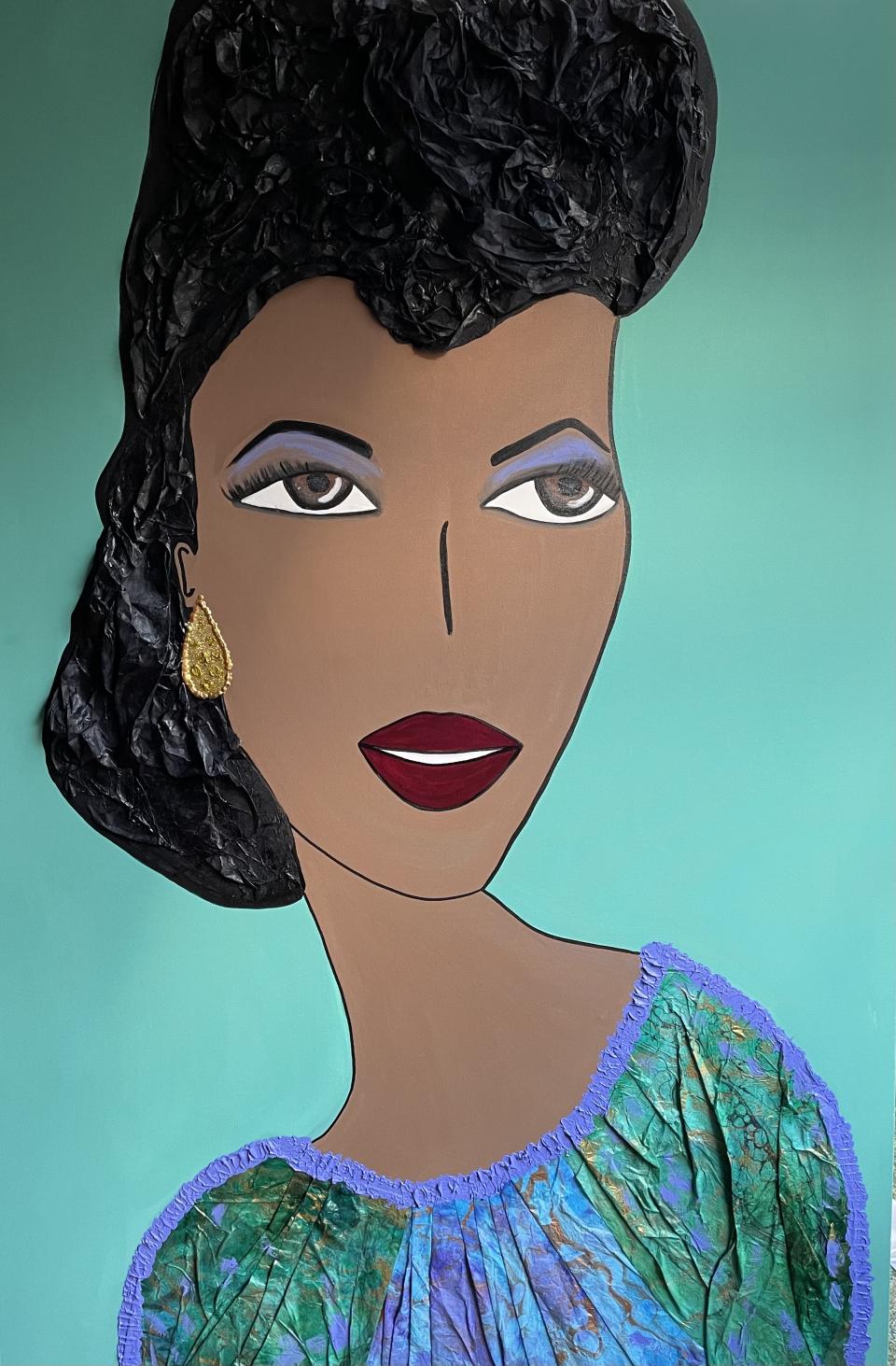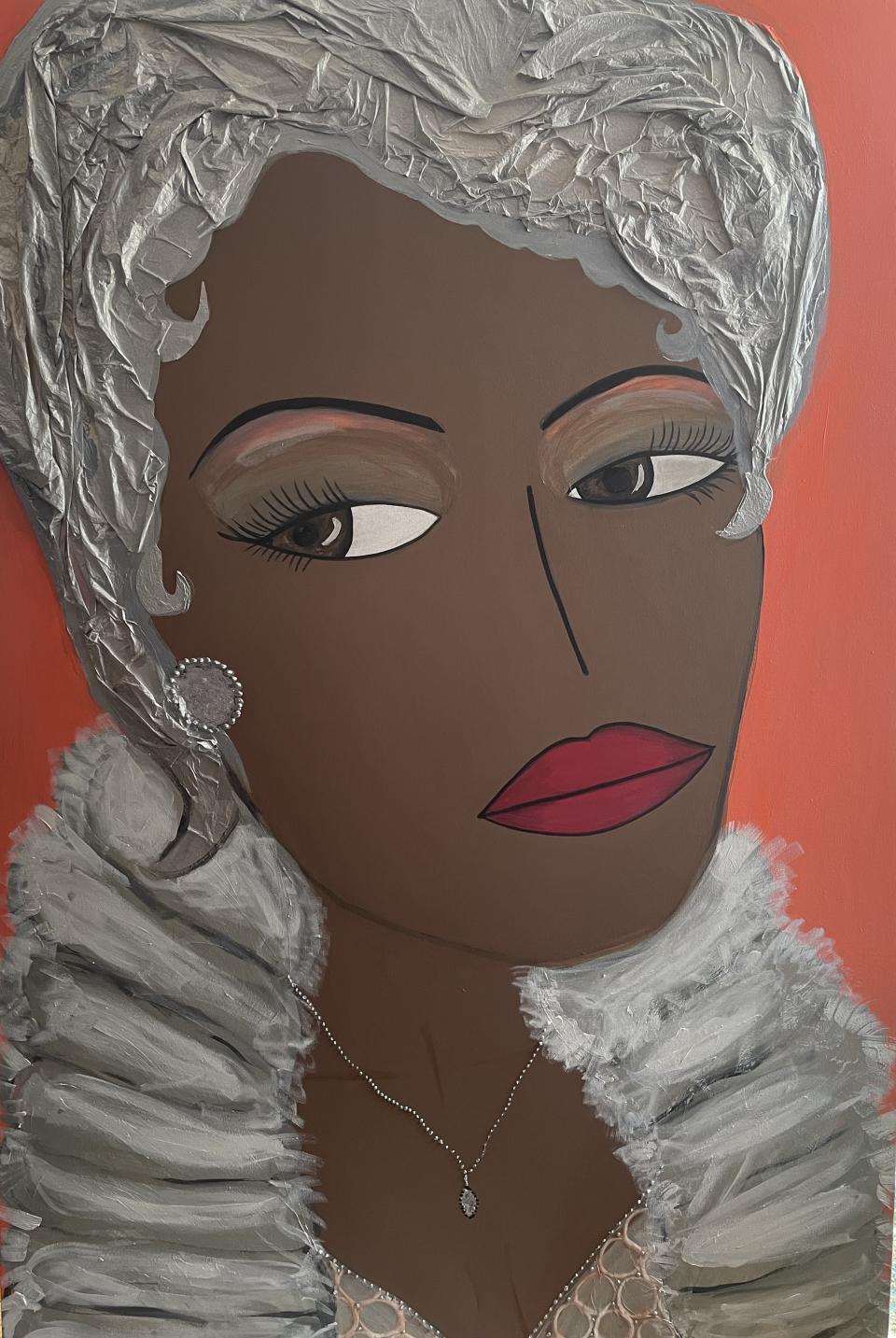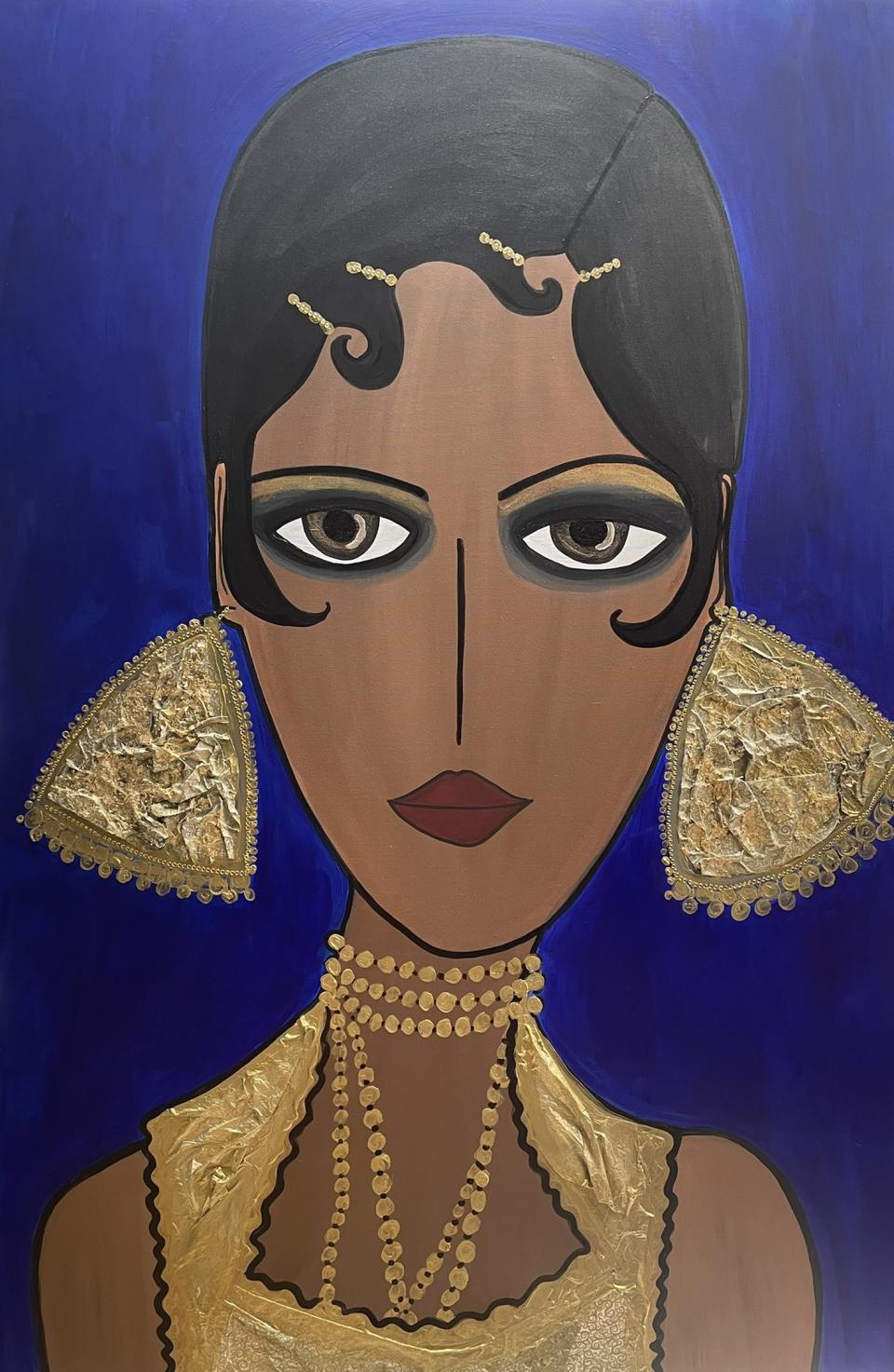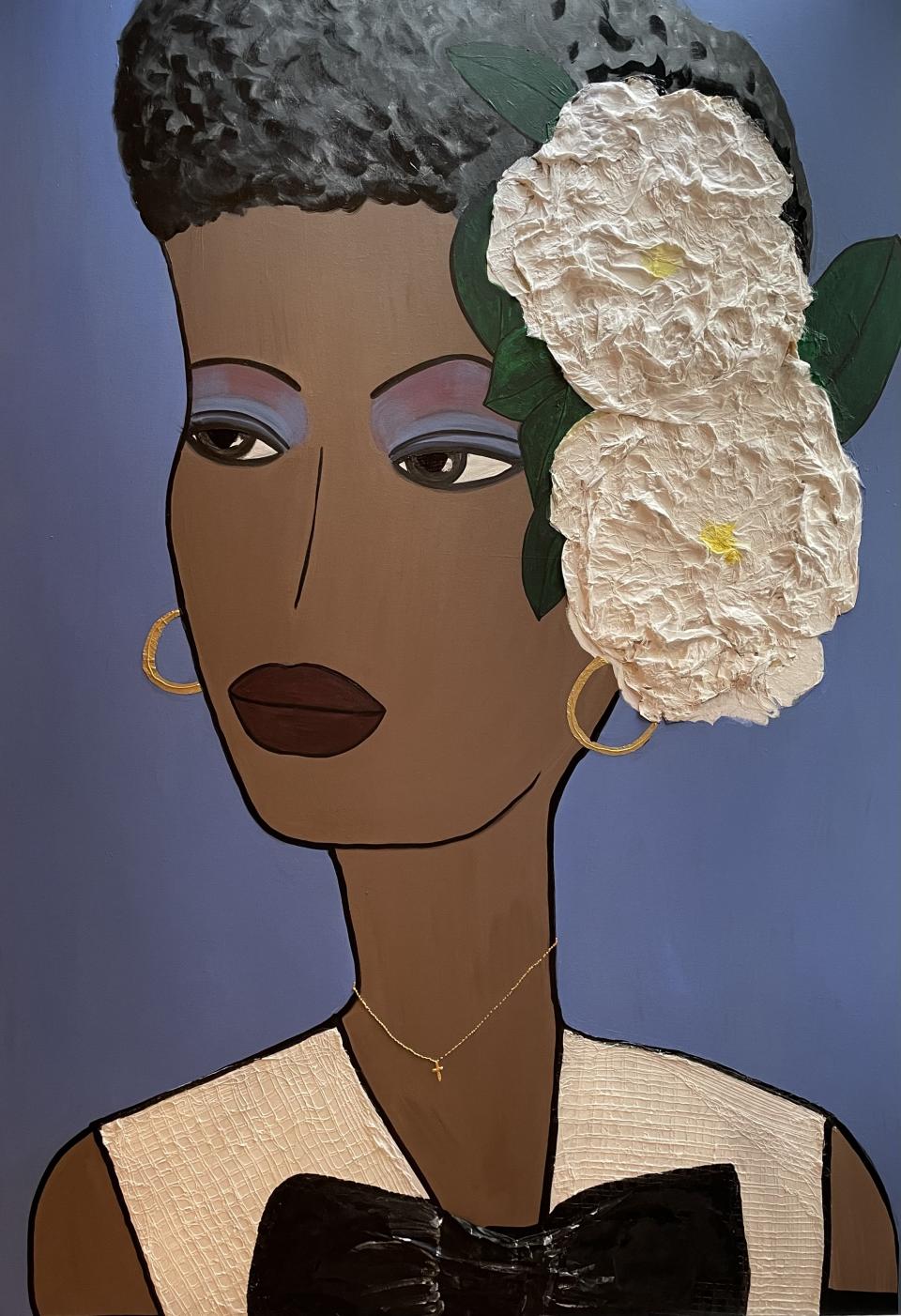Tributing Black Female Jazz Icons Through Portraiture

Rebecca Moses and Ralph Pucci have a shared passion for jazz and will demonstrate that next month with an exhibit titled “Voices.”
It’s a celebration of eight strong and influential Black female jazz singers of the 20th century: Ella Fitzgerald, Nina Simone, Billie Holiday, Josephine Baker, Hazel Scott, Joyce Bryant, Sarah Vaughn and Lena Horne. Their mystique, style and beauty have been captured in portraits painted by the artist and designer Moses over the last seven months.
More from WWD
“I’ve been reading the biographies of these women, studied all kinds of images, and listened to them as much as I could. I grew up listening to their music, but I wanted to know more,” Moses said. “I had to figure out if I wanted to portray them at a younger age or an older age. Ultimately, it was more about capturing their physicality, a signature, a look.”

Courtesy of Rebecca Moses
The exhibit will be held at the Ralph Pucci International furniture and art gallery in Los Angeles, 1025 North McCadden Place, from Sept. 28 through Jan. 23. The portraits, each priced $25,000, are large, at 6 feet tall and 4 feet wide. There’s leafing, rice paper and rhinestones applied to the surfaces, creating a raised, three-dimensional effect, and the backgrounds are painted in vivid solid colors.
“The size and the three-dimensional effects were important to me, because these women are larger than life and multidimensional. And the boldness of the color is a reflection of the depth and emotion conveyed in their music,” Moses said.
Moses paints on an easel under the skylight in her 1,200-square-foot Manhattan apartment/studio, and resourcefully used the flat surface of her marble kitchen countertop to apply the special 3D elements, otherwise they would have slid off the canvas.
“It was all done by trial and error,” Moses said. “The 3D technique was a new thing for me. I wanted these women to not just be electrified by color and size, but also as if they were coming off the canvas.

Courtesy of Rebecca Moses
“These women are legends that changed the face of music and civil rights in the 20th century. It wasn’t just about singing. It was also about the struggle. Behind those iconic voices and legendary talents, their journeys were marked by painful struggles with racism, personal humiliation, stereotyping and social pressures. These women were individuals with unique musical styles, aesthetics and personal characteristics but they all made monumental strides towards overcoming intolerance and ignorance. They paved the way for other young women to pursue their dreams with conviction.”
Moses and Pucci have previously collaborated on a few projects involving art and mannequins. “It’s a coincidence that we both love jazz but Ralph had a big influence on me going this route,” Moses said. “Since the beginning of COVID-19, I’ve been shifting to realistic portraiture, but Ralph wanted more.”
“Rebecca wants to tell a story,” Pucci said. “She loves to paint women, and who has a better story than these jazz icons?
“Jazz is played in all three of our galleries, all the time,” Pucci added.
His galleries in L.A., Miami and New York showcase home furnishings, lighting, fashion, art and mannequins, and each year Pucci stages a fundraiser for Jazz House Kids, a program providing music classes, mentoring and apprenticeships.
“We feel there is a close correlation between our ideas at Pucci and jazz,” he said. “Jazz is a form of music that’s obviously well studied and also a form of music that explores. The jazz icons in ‘Voices’ took the idea right in front of them — the notes of the music — and brought it to areas that were unexpected. At Pucci, there’s also a freedom to explore with design ideas, very much the same way.
“With each of these women there is an incredible story of pain, an incredible story of success and an incredible story of how they reinvented music, and then there is the beauty of this imagery,” Pucci added. “They literally put their necks on the line going on stage back then. They had bottles thrown at them, and at the same time they were creating a form of music that was not always understood. This wasn’t the music everyone was listening to at that particular moment, then it became what everyone was listening to. These are goddesses.”

Courtesy of Rebecca Moses
“Ella perfected scat,” Moses said. “She would listen and listen and listen to sounds and mold them into something else. She did a 15-minute scat in Berlin that was epic. She was friends with Marilyn Monroe, who learned a lot about singing by listening to Ella. When Ella wanted to sing at a Los Angeles club but wasn’t allowed, Marilyn called the owner and said, ‘I will sit in the front row and bring my friends every night.’ Ella was always indebted to Marilyn.
“Joyce Bryant — they called her the Black Marilyn Monroe and the bronze bombshell. She was truly a great beauty with an incredibly strong voice and a range of several octaves. She wore beautiful pink chiffon gowns with this incredible bustier,” said Moses, noting that the 94-year-old Bryant was once burned in effigy by the Ku Klux Klan.
“Billie Holiday, when ironing her hair, accidentally burned it off,” Moses said. “So she literally took gardenias in a vase and just put them on to cover the burn. Gardenias became her signature.
“Hazel Scott was a prodigy. She played two pianos simultaneously and had an amazing voice. She was married to Adam Clayton Powell. Hazel, Joyce, Lena — several of the women made movies too.”
Nina Simone, Moses said, “had her dark sides but really felt joy when she got up off the piano and started dancing. Her voice was so intoxicating. I thought a pink background would be a total juxtaposition to her, and then I found out that pink was her favorite color.”
“They did extraordinary things with music, but being women of color they had to fight triply hard,” said Moses said. “They couldn’t even walk in the front doors of where they performed. What they did was so legendary. I would hope that singers of today could look at these women, read their stories and learn. Their struggles left a big impact on me.”

Courtesy of Rebecca Moses
Best of WWD
Sign up for WWD's Newsletter. For the latest news, follow us on Twitter, Facebook, and Instagram.

